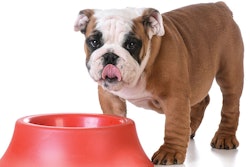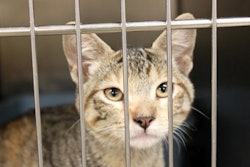
America’s pets are growing increasingly fatter, new research has found. About one-third of dogs and cats in the US are now overweight, according to a report released in June 2017 by Banfield Pet Hospital, which operates nearly 1,000 veterinary clinics across the US and Puerto Rico.
The organization found the number of overweight cats spiked 169 percent from 10 years ago, while the number of overweight dogs jumped 158 percent. Banfield said it analyzed visits in 2016 from 2.5 million dogs and 505,000 cats.
Pet obesity can have serious consequences and is associated with other chronic conditions and diseases, including arthritis and tracheal collapse in dogs, researchers said.
"Overweight pets — and the many related conditions associated with those extra pounds — are critical issues that we strive to both educate pet owners on and address in partnership with our clients to ultimately help pets live their best life," Dr. Daniel Aja, Banfield’s senior vice president and chief medical officer, said in the report.
The report stated overfeeding and lack of exercise are major contributing factors of obesity in pets. "Obesity is so common that many people underestimate their pet's body condition, preventing them from taking action to manage their pet's weight," the Banfield report said.
Pet food's role in pet obesity prevention
The pet food industry is among the first lines of defense in the fight against pet obesity. As the most obvious go-to for overweight pet lifestyle changes, pet food has long since expanded to include a wide variety of formulations purporting weight control or weight loss, in both specialized veterinary and retail store options.
Pet food manufacturers continue to balance the nutritional needs of pets with what consumers think is best for their pets. “We have over 500 veterinarians, scientists and nutritionists on staff at Purina who are continually striving to provide the highest quality and 100 percent complete and balanced nutrition for pets at every stage of life,” said Paul Cooke, vice president of industry relations for Nestlé Purina Pet Care.
In an interview with Petfood Industry, Temple Grandin, PhD, recommended that pet food companies use pictorial representations on their bags to educate consumers about what pets’ healthy weights look like.
Regardless of what pet food and treat manufacturers do, Grandin ultimately put the responsibility on pet owners to take control over pet obesity. Pets may be inclined to eat more when under stress, like humans, she said. Yet, even under stressful conditions, the responsibility to control a pet’s food intake still falls upon their human caretaker.















